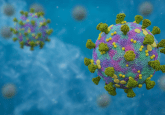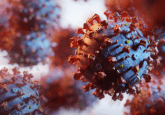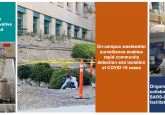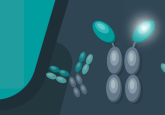No prob-llama: SARS-CoV-2 neutralized by engineered llama antibodies

Two different research groups have demonstrated that engineered llama antibodies are able to neutralize the SARS-CoV-2 virus, presenting a potential new treatment for severe cases of COVID-19.
Native to South America, the llama – or lama glama – has gained popularity in recent years, with many toys and home furnishings featuring the iconic camelid or its close relation, the alpaca. Now, its popularity could increase further as researchers look to the llama as the source of a possible treatment for COVID-19.
If you would like to keep up to date with our content on coronavirus, you can sign up for our site here, where you can subscribe to our newsletters for free!
Unlike humans, llamas produce two types of antibodies; one is similar in size and structure to a human antibody, whereas the other is much smaller. At approximately 25% of the size of the former type, the latter antibody is ideal for accessing the small crevices and pockets found on the spike proteins of a coronavirus.
In 2016, an international team of researchers from The University of Texas at Austin (USA), the National Institutes of Health (MD, USA) and Ghent University (Belgium) began studying the smaller of the two llama antibodies as a potential treatment for two earlier coronaviruses – MERS-CoV and SARS-CoV-1. Upon the outbreak of COVID-19, they applied what they had found and linked two copies of an antibody that would bind to SARS-CoV-1 to engineer an antibody for SARS-CoV-2.
Early tests of their creation found it was able to neutralize a pseudotyped virus containing the spike protein of SARS-CoV-2 from infecting cells in vitro, making it the first known antibody to neutralize both forms of SARS virus [1]. Publishing their study in Cell last May, the team now hope to conduct preclinical studies of the antibody therapy, with the end goal of a human treatment.
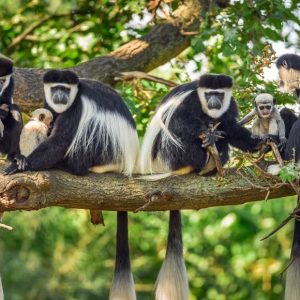 Social distancing could prevent microbial transmission in monkeys
Social distancing could prevent microbial transmission in monkeys
A study investigating microbial transmission in wild colobus monkeys has demonstrated that social distancing between groups is the strongest predictor of high gut microbiome variation.
The second study comes from a UK-based, multi-institution team that has also utilized the smaller of the llama’s antibodies to engineer SARS-CoV-2-neutralizing nanobodies [2]. Using advanced imaging techniques, the team demonstrated that these nanobodies – named due to their small size – were able to bind tightly to the spike protein of SARS-CoV-2 in a different way to previously discovered antibodies.
“The electron microscopy structures showed us that the three nanobodies can bind to the virus spike, essentially covering up the portions that the virus uses to enter human cells,” explained study author David Stuart (University of Oxford, UK).
Developing a treatment for COVID-19 is a priority for many research groups now, and the UK team hope to use their nanobodies to develop a novel therapy that works in a similar way to a transfusion of human convalescent serum. This passive immunization process has been found effective as a treatment but can be difficult to perform safely and it can take time to match the right individuals with the right antibodies. A lab-based product such as the llama-derived nanobodies could provide a universal standard that can be made on demand and given earlier in the disease progression.
To increase the efficacy of their treatment, the group combined the llama-derived nanobodies with a human antibody, finding that the combination provided a more powerful treatment than either one when given alone. The results of their study were recently published in Nature Structural & Molecular Biology.
Time has been of the essence in this study, and in the race to develop a treatment for COVID-19 the nanobodies were created, analyzed and tested in just 12 weeks. “This has seen the team carry out experiments in just a few days, that would typically take months to complete. We are hopeful that we can push this breakthrough on into pre-clinical trials,” commented nanobody program leader Ray Owens (University of Oxford).
